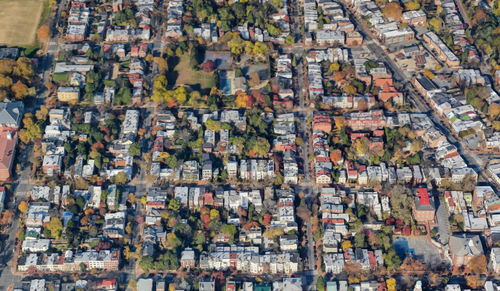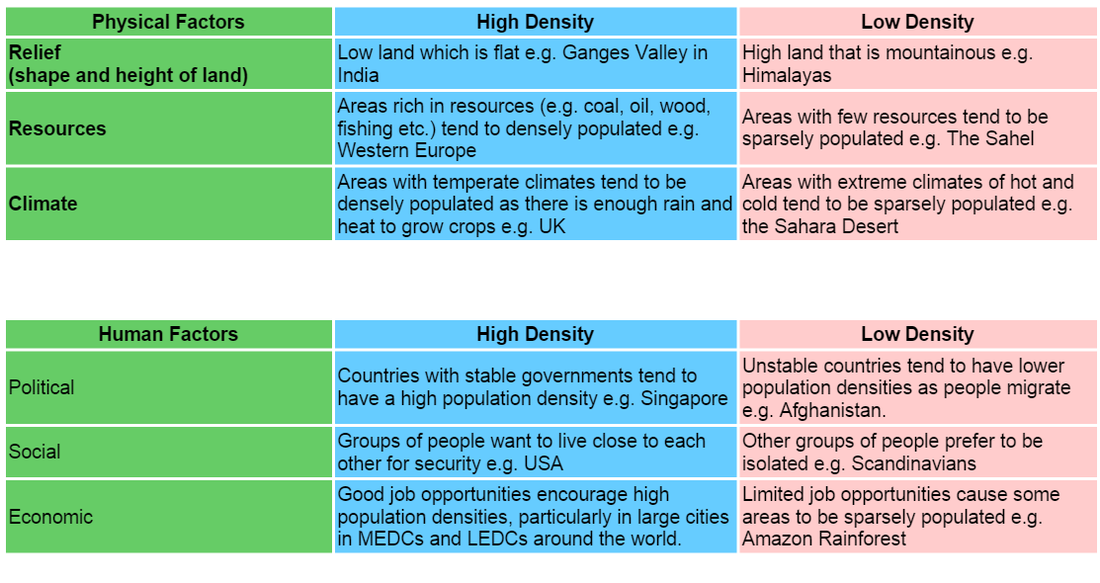Population Distribution
Population Distribution
Population Distribution-this is an indication of where people live in a particular country or area.PD- the location of people within a wide area, which may include smaller areas of high or low population density.
Dense areas vs Sparse Areas
Dense population:

- around large cities, where there are many job opportunities.
- on flat land, where it is easy to build roads and houses.
- close to major roads, with good transport services.
- on fertile land, where farms are productive.
- close to mineral resources, such as bauxite or oil.
Sparse Population
There is usually a sparse population:
- in mountains and on steeply sloping land, where it is difficult to build
- in swamp and wetlands
- in areas with poor soil, where farming is difficult
- in isolated areas with poor transportation.
Population distribution is affected by several factors:
- Relief: Most settlements are built on flat or gently sloping land. Few people live in mountainous areas.
 |
| Falmouth was built on flat land. This facilitates a dense population. |
- Climate: Few people live in deserts, or in very cold areas such as the Canadian Arctic.
 |
| Few people live in the cooler regions of the world like Canada, Alaska and the Himalayas. An example of this factor is the Blue Mountains (above). |
- Working opportunities-many people live where jobs are available: for example, close to large cities, mining areas, or tourist areas.
 |
| Persons normally visit cities or major towns across Jamaica for job opportunities. |
- Living conditions- where people are able to choose, they prefer areas where living conditions are pleasant, with good health and education facilities, a spacious living environment and a low crime rate.
 |
| People prefer to live in enclosed communities (schemes) which have limited or no contact to crimes. |
In many Caribbean islands:
- Most people live close to the capital, which was usually built next to a natural harbour, on the sheltered leeward coast, away from the direct force of the trade winds. Today, most job opportunities are located in or close to the capital city.
- There are many rural settlements in productive agricultural areas, usually close to the coast or in river valleys.
- Few people live in mountainous and thickly forested areas in the interior.
Summary:

Activity

(a) Outline ONE factor which may have prevented persons from settling in the sparse area. ( 2 marks)
(c) Give TWO examples to show how the high density of the population in Area A may affect the quality of services provided in the area. ( 4 marks)
(d) (i) Suggest THREE measures which the government of a country could take to encourage people to migrate to sparse areas.
NB: You are required to make comments using a Gmail account with a recognized name.


Comments
Post a Comment